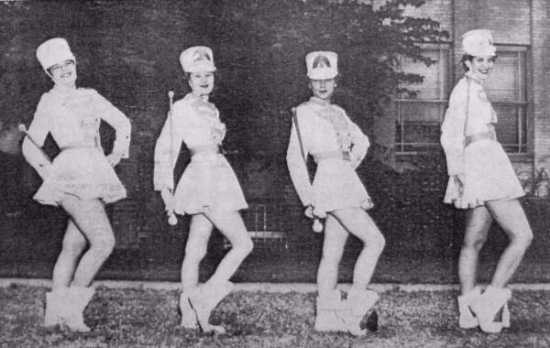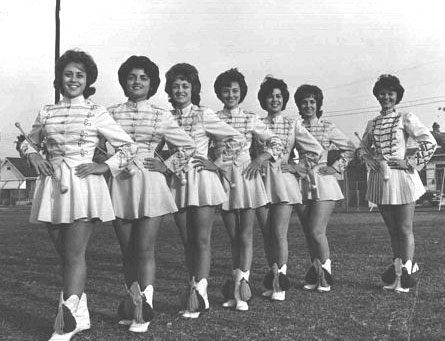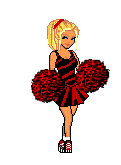

The history of baton twirling in the USA is sketchy, most of it deriving from guess or hearsay, and its actual origin is unknown. The most popular guess is that it is related to the colourful Swiss flag swinging which came to that country along with the Dutch when they settled in Pennsylvania. Another is that it originated at Millsaps College in Mississippi. Here, shortly after the Civil War, the well-known Major Millsaps founded a college. His "lady athletes" were called the Majorettes, and it is possible that this is the origin of our present-day high-stepping majorette's name. However, we do know that the art of baton twirling is relatively new. It was not until early in the 19th century that the conductor's baton was first used as a visual aid to beating time. In 1776, when the first band of any importance, the United States Marine Band, was organised, the baton was not in use.
In the early 1930's the drum majorette was unique. Frequently she was the only one of her sex in a parade, stepping high in front of the formation. The high prancing strut and the spinning baton added much colour to civic, military, or school bands. The drum majorette was top banana of the campus, envied by the girls watching from the sidelines, who decided that they, too, would like to be drum majorettes. Thus the popularity and size of the marching groups grew, and baton twirling became an increasingly popular American institution. Marching and twirling have become complicated by the addition of intricate dance steps as well as complex twirling. Mastering the choreography of baton twirling routines now requires highly developed skills, based on training and practice.
In the early part of the century, twirlers were mostly boys and men because the batons were very heavy. In the late 1930s the majorette made her debut,.when band directors decided to increase the audience appeal of the marching band by adding a baton twirler or two. The role became so popular that high school girls all over the country wanted to participate. Shorter, lighter batons were developed for the rash of feminine twirlers springing up. Through the '40s, '50s, and '60s, more and more girls became majorettes. The involvement of girls and young women made twirling a more graceful, artistic form of self-expression than it had ever been before. In the middle of the 1950s incorporated baton twirling associations began to develop. The associations organised baton competitions on both state and national levels. Two of the largest associations today are the United States Twirling Association (USTA) and the National Baton Twirling Association (NBTA). Both hold national competitions every year and officiate at competitions at local state and regional levels.
'Feels Like I'm In Love' - Kelly Marie (Reached No.1 in UK Charts in 1980)
Used as Music for Majorette Displays in 1980's



1954

1960














.